nowhere / now here
05 Jul - 11 Aug 2024
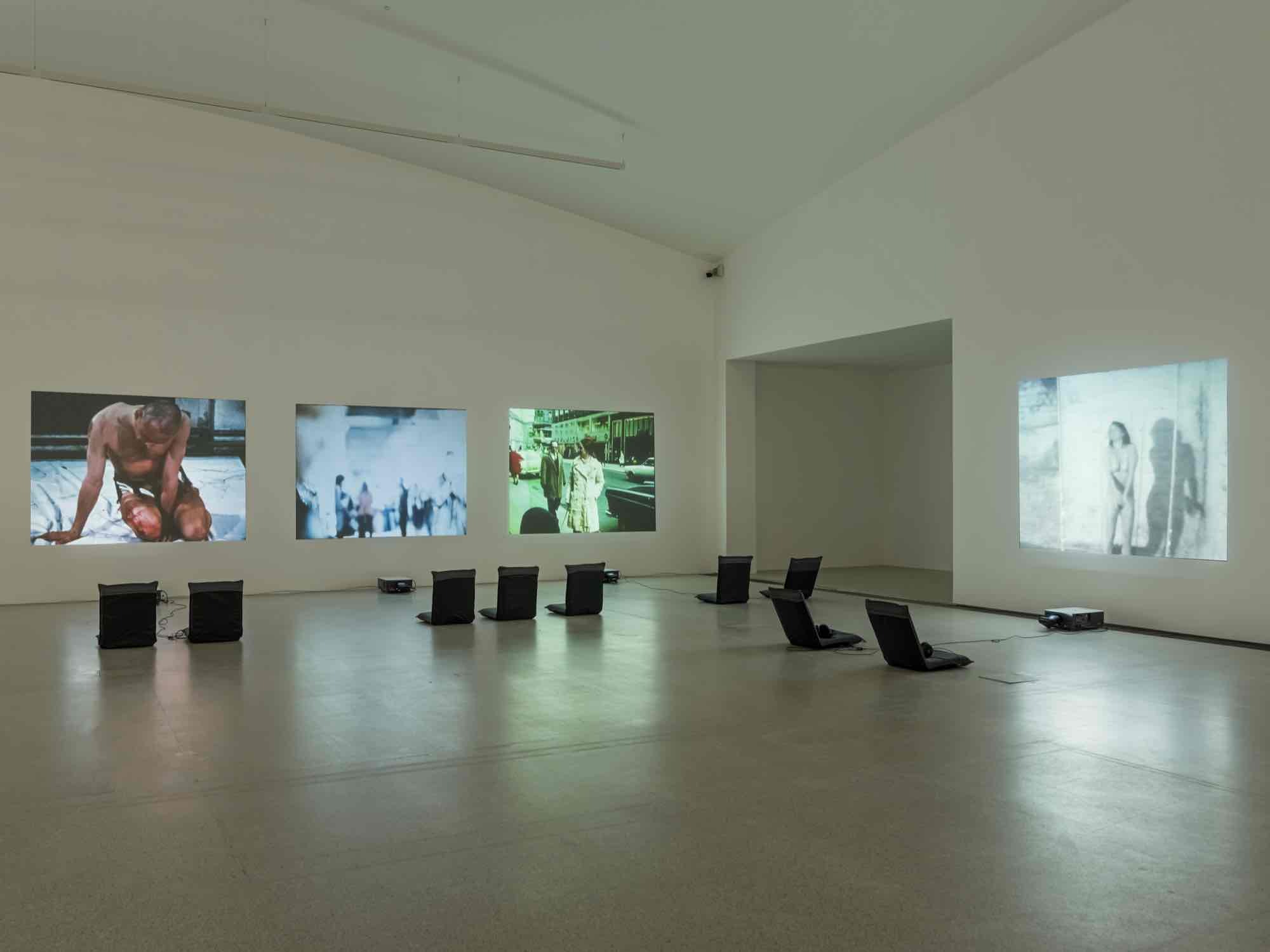
Exhibition view: nowhere / now here, July 5, to August 11, 2024
Günter Brus, Zerreissprobe, 1970
Kurt Kren, 38/79 Sentimental Punk, 1979
Ernst Schmidt jr., Einszweidrei, 1965
VALIE EXPORT, HYPERBULIE, 1973
Photo: Klaus Pichler / mumok
Günter Brus, Zerreissprobe, 1970
Kurt Kren, 38/79 Sentimental Punk, 1979
Ernst Schmidt jr., Einszweidrei, 1965
VALIE EXPORT, HYPERBULIE, 1973
Photo: Klaus Pichler / mumok
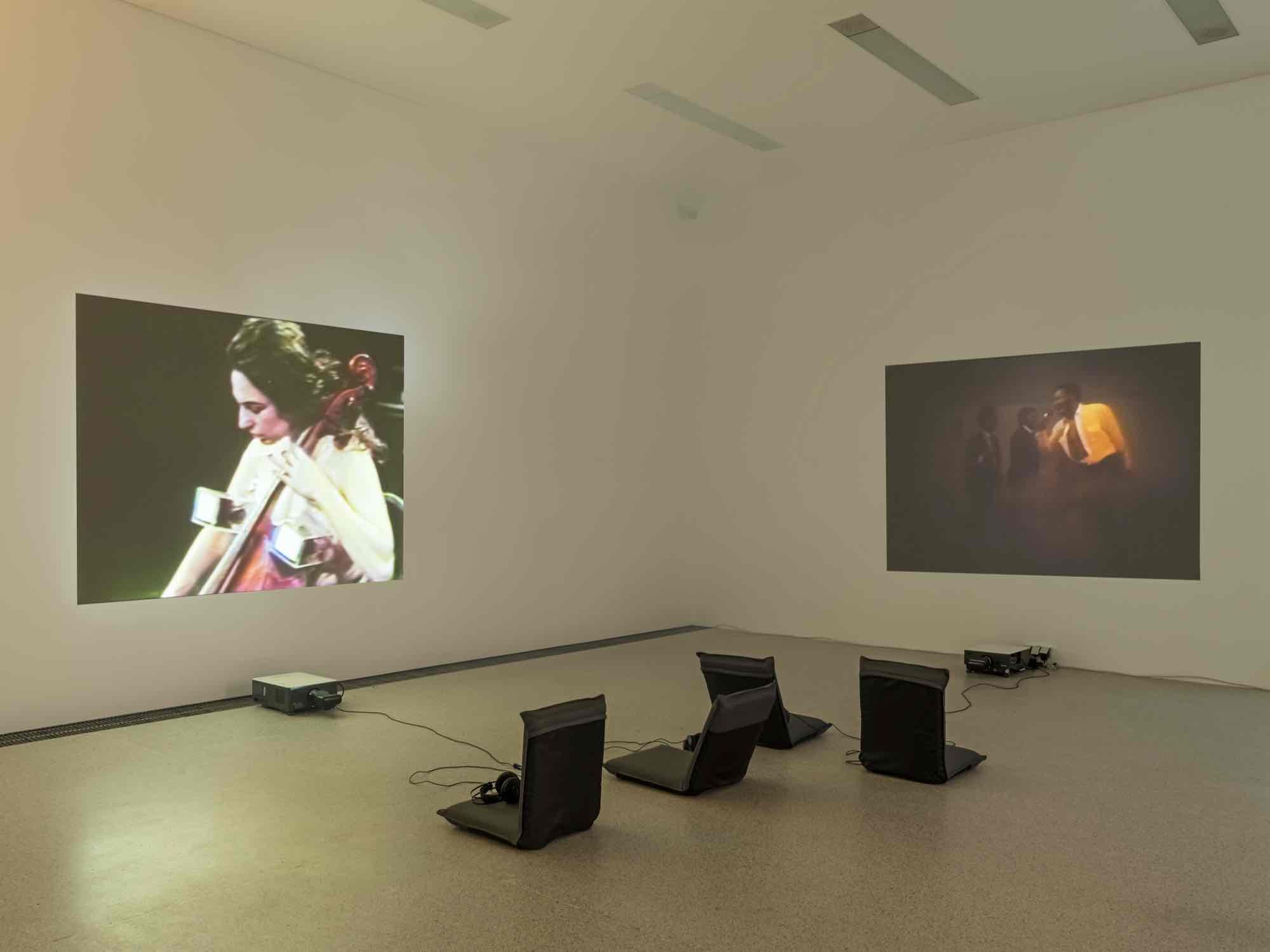
Exhibition view: nowhere / now here, July 5, to August 11, 2024
Nam June Paik / Charlotte Moorman, Rare Performance Documents, 1961 – 1994
Ulysses Jenkins, Two-Zone Transfer, 1979
Photo: Klaus Pichler / mumok
Nam June Paik / Charlotte Moorman, Rare Performance Documents, 1961 – 1994
Ulysses Jenkins, Two-Zone Transfer, 1979
Photo: Klaus Pichler / mumok
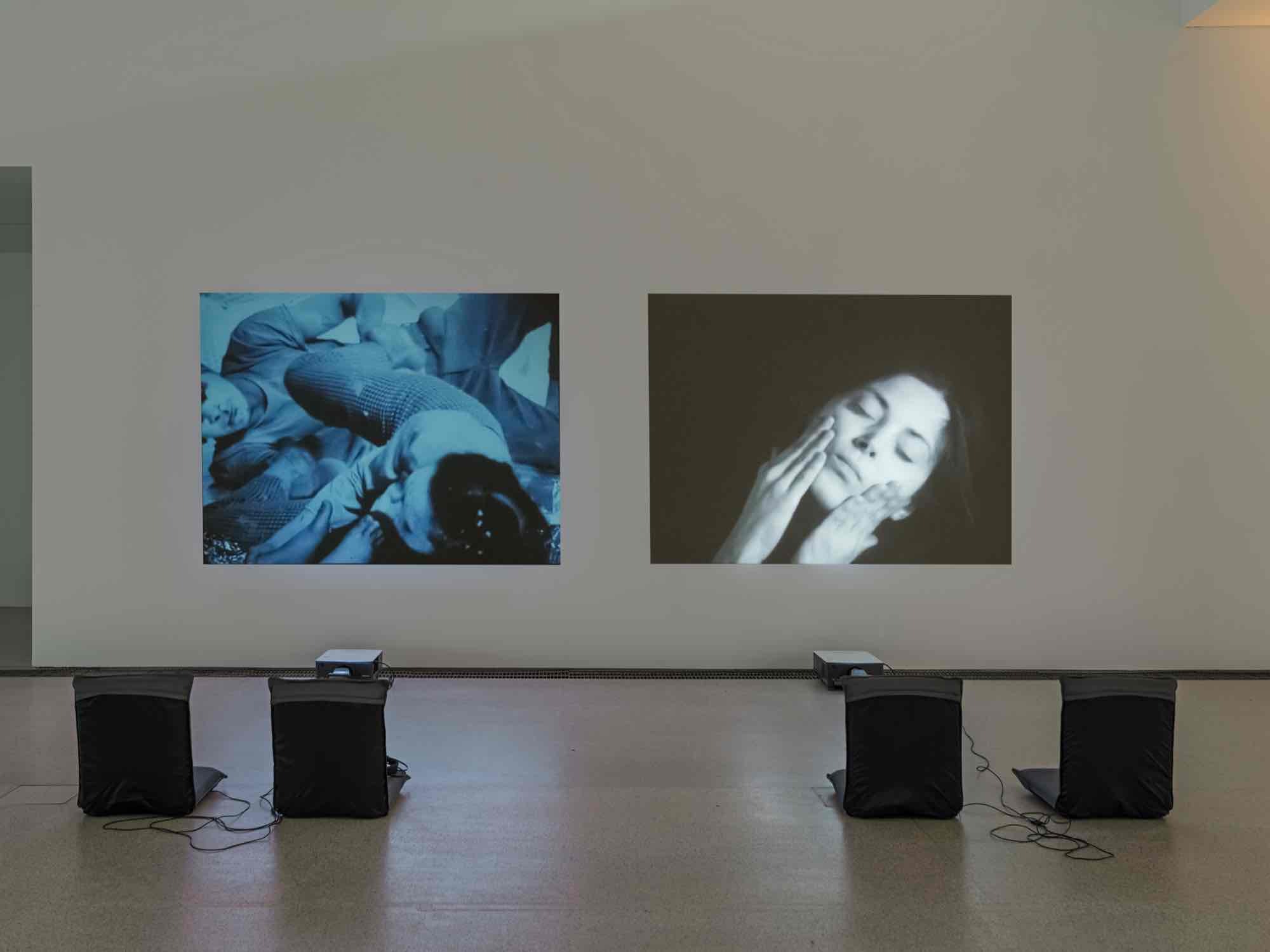
Exhibition view: nowhere / now here, July 5, to August 11, 2024
Carolee Schneemann, Snows, 1967
Hannah Wilke, Gestures, 1974
Photo: Klaus Pichler / mumok
Carolee Schneemann, Snows, 1967
Hannah Wilke, Gestures, 1974
Photo: Klaus Pichler / mumok
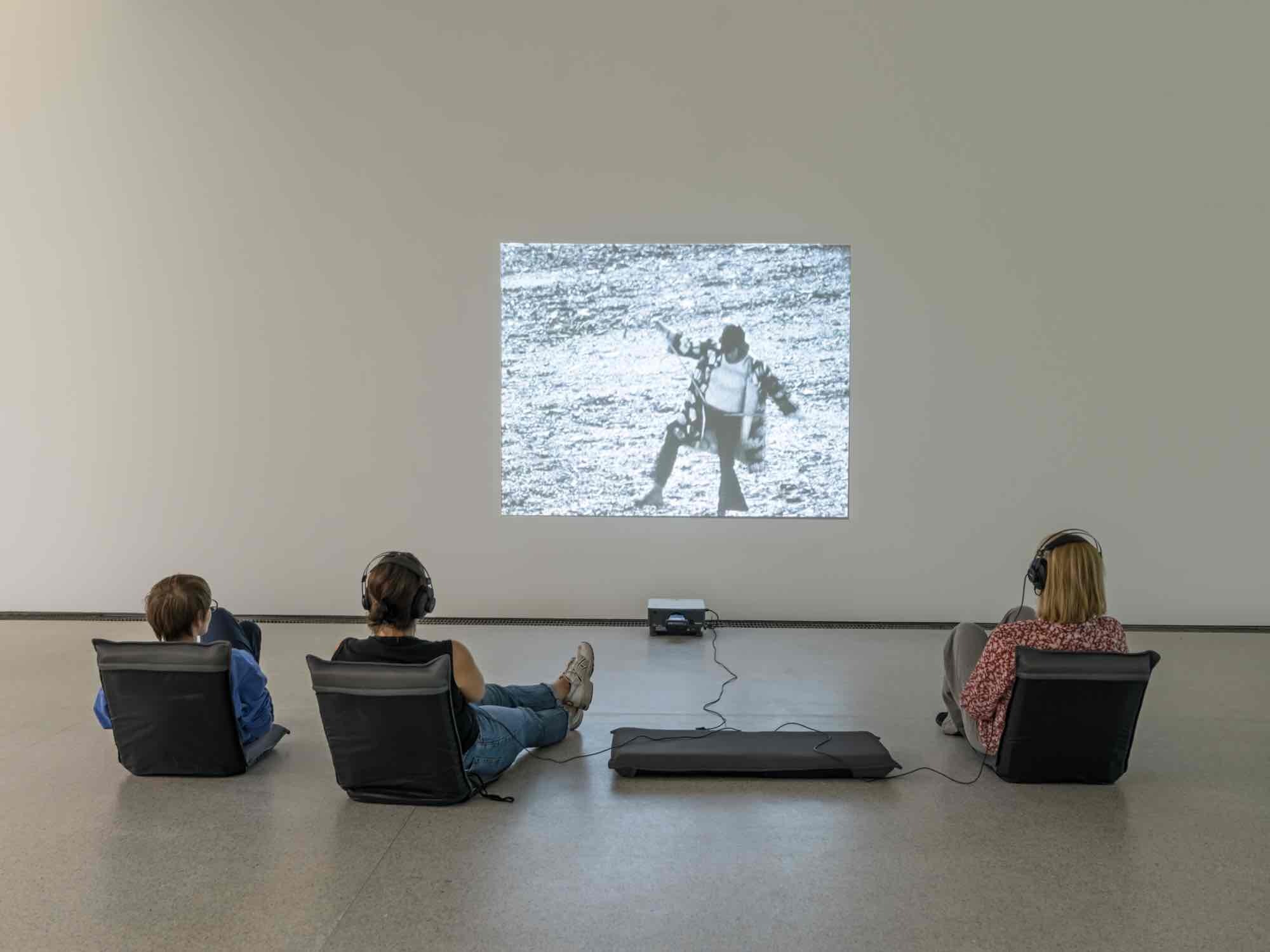
Exhibiton view: nowhere / now here, July 5, to August 11, 2024
Joan Jonas, Songdelay, 1973
Photo: Klaus Pichler / mumok
Joan Jonas, Songdelay, 1973
Photo: Klaus Pichler / mumok
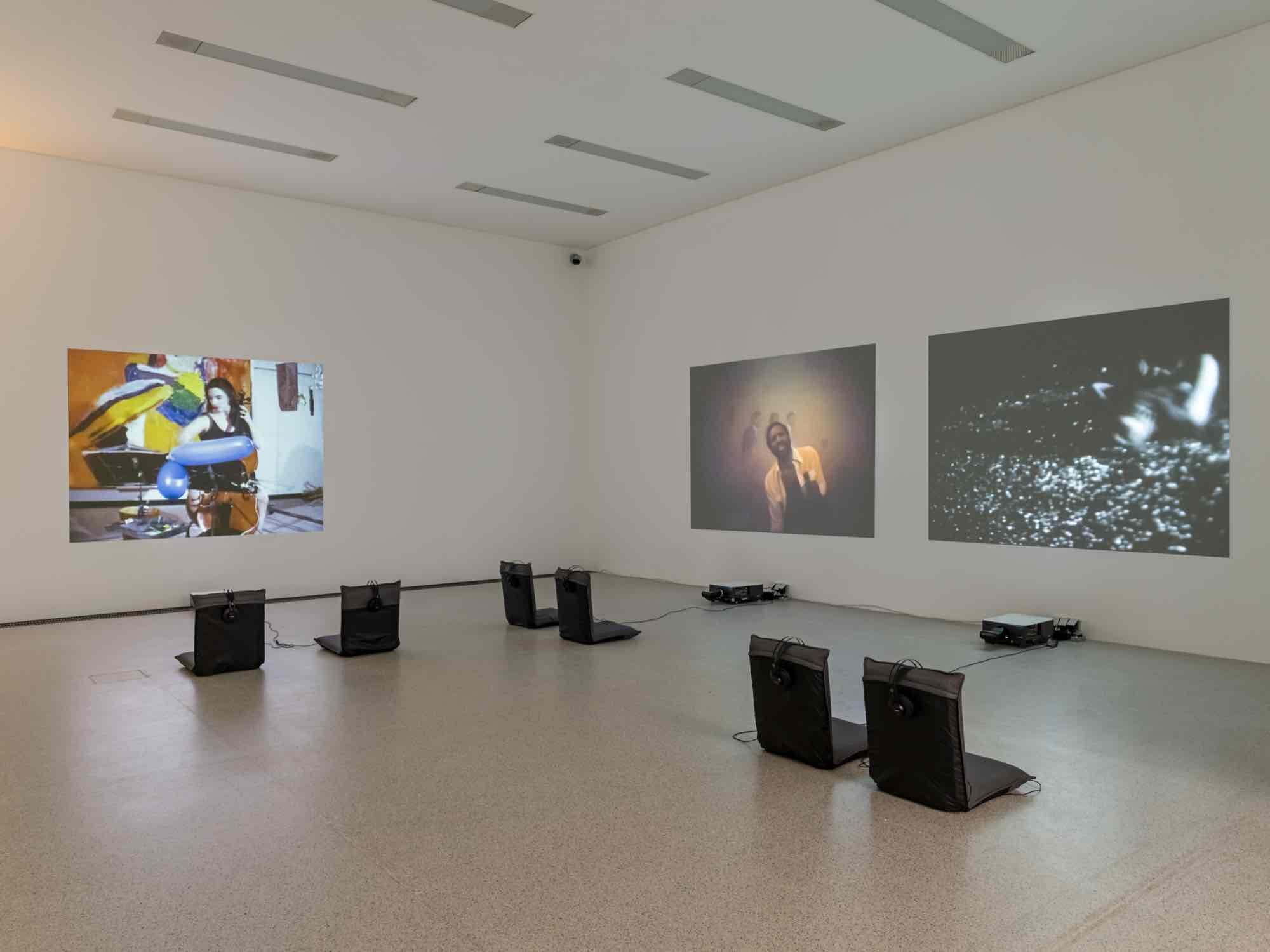
Exhibition view: nowhere / now here, July 5, to August 11, 2024
Nam June Paik / Charlotte Moorman, Rare Performance Documents, 1961 – 1994
Ulysses Jenkins, Two-Zone Transfer, 1979
Chris Burden, Documentation of Selected Works 1971 – 1974, 1971 – 1975
Photo: Klaus Pichler / mumok
Nam June Paik / Charlotte Moorman, Rare Performance Documents, 1961 – 1994
Ulysses Jenkins, Two-Zone Transfer, 1979
Chris Burden, Documentation of Selected Works 1971 – 1974, 1971 – 1975
Photo: Klaus Pichler / mumok

Exhibition view: nowhere / now here, July 5, to August 11, 2024
Günter Brus, Selbstverstümmelung, 1965
Kurt Kren, 10/65 Selbstverstümmelung, 1965
Ernst Schmidt jr., Einszweidrei, 1965
VALIE EXPORT, HYPERBULIE, 1973
Carolee Schneemann, Up To and Including Her Limits, 1976
Hannah Wilke, Gestures, 1974
Photo: Klaus Pichler / mumok
Günter Brus, Selbstverstümmelung, 1965
Kurt Kren, 10/65 Selbstverstümmelung, 1965
Ernst Schmidt jr., Einszweidrei, 1965
VALIE EXPORT, HYPERBULIE, 1973
Carolee Schneemann, Up To and Including Her Limits, 1976
Hannah Wilke, Gestures, 1974
Photo: Klaus Pichler / mumok
The live performances of eight contemporary choreographers confront performative video works by twelve artists from the 1960s and 1970s.
At the same time as the fledgling genre of performance art shattered Western ideas of the static art object in the early 1960s, video technology made a new method of recording art possible. nowhere / now here is dedicated to this contradiction between live art as an ephemeral, transient, unique event and its technological (re)production. Contrary to their original form, live performances become an imagebased art form in the historiography of the corresponding documentary material and, as such, find their way into museum collections like that of mumok.
The title nowhere / now here refers to the festival’s dual structure, which interweaves the live program with the historical film footage. What is created in one instance disappears in the next, only to reappear in a different medium elsewhere. At the heart of this historical exploration are film documentaries about performances from the 1960s and 1970s that are part of the mumok collection—works that tackled various social taboos, body images, and oppressive conventions and consequently influenced contemporary art in a major way.
In her filmic assemblage Meat Joy (1964), Carolee Schneemann celebrates the nude body as a material and visualizes a changing social dynamic in the suspension of cultural taboos. The experimental treatment of the body as well as the examination of the relationship between individual and social bodies are elements that link Schneemann’s work with that of the Vienna Actionist Günter Brus. In the existential body art of Selbstverstümmelung (Self-Mutilation, 1965), Brus takes a radical stance toward a rigid system shaped by conservative norms. Similarly, VALIE EXPORT in Hyperbulie (1973) negotiates to what extent body and mind are shaped and tamed by societal systems, by moving through a corridor of electrified wires in the nude and repeatedly breaking down as she touches them.
Performances must be viewed as documents of their time. This becomes clear in Schneemann’s examination of the horrors of the Vietnam War as well as Chris Burden’s “performance pieces,” which show a provocatively physical reaction to the specific social and political moment in time. Burden put himself in solitary confinement, had somebody shoot at him, dragged himself across broken glass, and tried to breathe under water.
The only loan for this exhibition is Ulysses Jenkins’s Two-Zone Transfer (1979), which points to crucial gaps within the mumok collection, reminding us that a collection can never be complete and must be renegotiated continuously. In conversation with Burden’s Documentation of Selected Works 1971-1974, Jenkins uses a dreamscape to examine the history and development of African American stereotypes in the entertainment industry.
nowhere / now here also delves into the politics of the gaze and editing, which are noticeable aspects of many film documentaries. Who is behind the camera? Whose angle is presented? In what ways was the footage manipulated?
In Songdelay (1973), Joan Jonas probes the depths of the technical possibilities of video in relation to her live performances and the spatial perception of the viewers by creating a clear temporal discrepancy between what is seen and what is heard. The representational gap between live act, photography, and video also becomes apparent in Günter Brus’s Selbstverstümmelungen (1965) and Kurt Kren’s 10/65 Selbstverstümmelung (1965). While Kren arrives at a unique visual language through his sharp focus on Brus’s face and the individual torture instruments with rapid cuts, Brus’s photographic version seems to be more interested in capturing the setting and the body as such. What becomes clear is that presentation can never be truly objective, because the gaze through the camera is always representative of a specific point of view of the event at hand.
Artists: Chris Burden, Günter Brus, VALIE EXPORT, Terry Fox, Ulysses Jenkins, Joan Jonas, Kurt Kren, Hermann Nitsch, Nam June Paik, Ernst Schmidt jr., Carolee Schneemann, Hannah Wilke
nowhere / now here. A Performance Festival is curated by Marianne Dobner and Christine Standfest (live programming, ImPulsTanz).
At the same time as the fledgling genre of performance art shattered Western ideas of the static art object in the early 1960s, video technology made a new method of recording art possible. nowhere / now here is dedicated to this contradiction between live art as an ephemeral, transient, unique event and its technological (re)production. Contrary to their original form, live performances become an imagebased art form in the historiography of the corresponding documentary material and, as such, find their way into museum collections like that of mumok.
The title nowhere / now here refers to the festival’s dual structure, which interweaves the live program with the historical film footage. What is created in one instance disappears in the next, only to reappear in a different medium elsewhere. At the heart of this historical exploration are film documentaries about performances from the 1960s and 1970s that are part of the mumok collection—works that tackled various social taboos, body images, and oppressive conventions and consequently influenced contemporary art in a major way.
In her filmic assemblage Meat Joy (1964), Carolee Schneemann celebrates the nude body as a material and visualizes a changing social dynamic in the suspension of cultural taboos. The experimental treatment of the body as well as the examination of the relationship between individual and social bodies are elements that link Schneemann’s work with that of the Vienna Actionist Günter Brus. In the existential body art of Selbstverstümmelung (Self-Mutilation, 1965), Brus takes a radical stance toward a rigid system shaped by conservative norms. Similarly, VALIE EXPORT in Hyperbulie (1973) negotiates to what extent body and mind are shaped and tamed by societal systems, by moving through a corridor of electrified wires in the nude and repeatedly breaking down as she touches them.
Performances must be viewed as documents of their time. This becomes clear in Schneemann’s examination of the horrors of the Vietnam War as well as Chris Burden’s “performance pieces,” which show a provocatively physical reaction to the specific social and political moment in time. Burden put himself in solitary confinement, had somebody shoot at him, dragged himself across broken glass, and tried to breathe under water.
The only loan for this exhibition is Ulysses Jenkins’s Two-Zone Transfer (1979), which points to crucial gaps within the mumok collection, reminding us that a collection can never be complete and must be renegotiated continuously. In conversation with Burden’s Documentation of Selected Works 1971-1974, Jenkins uses a dreamscape to examine the history and development of African American stereotypes in the entertainment industry.
nowhere / now here also delves into the politics of the gaze and editing, which are noticeable aspects of many film documentaries. Who is behind the camera? Whose angle is presented? In what ways was the footage manipulated?
In Songdelay (1973), Joan Jonas probes the depths of the technical possibilities of video in relation to her live performances and the spatial perception of the viewers by creating a clear temporal discrepancy between what is seen and what is heard. The representational gap between live act, photography, and video also becomes apparent in Günter Brus’s Selbstverstümmelungen (1965) and Kurt Kren’s 10/65 Selbstverstümmelung (1965). While Kren arrives at a unique visual language through his sharp focus on Brus’s face and the individual torture instruments with rapid cuts, Brus’s photographic version seems to be more interested in capturing the setting and the body as such. What becomes clear is that presentation can never be truly objective, because the gaze through the camera is always representative of a specific point of view of the event at hand.
Artists: Chris Burden, Günter Brus, VALIE EXPORT, Terry Fox, Ulysses Jenkins, Joan Jonas, Kurt Kren, Hermann Nitsch, Nam June Paik, Ernst Schmidt jr., Carolee Schneemann, Hannah Wilke
nowhere / now here. A Performance Festival is curated by Marianne Dobner and Christine Standfest (live programming, ImPulsTanz).
